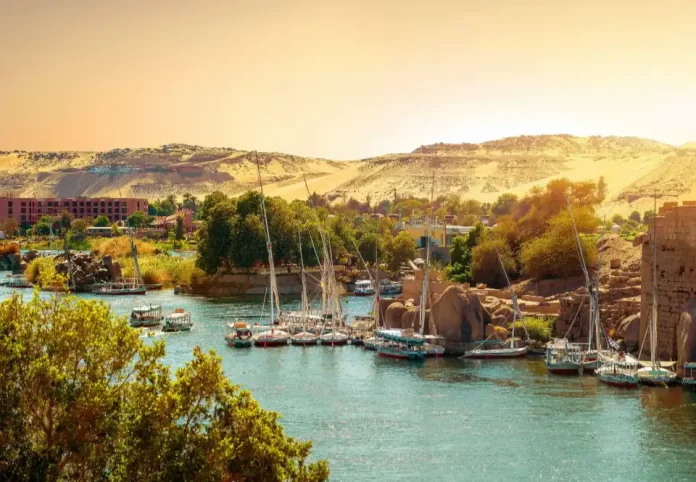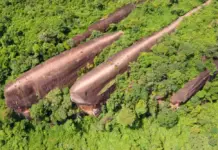Once play an important role as the gateway of ancient Egypt to Africa, Aswan is a great destination to get an overview of the ruins of Egypt, one of the best destinations in Egypt worth visiting. So, is Aswan worth visiting, how to visit Aswan, what to do in Aswan and how to plan a budget trip to Aswan for the first-time perfectly? Let’s check out our Aswan travel blog (Aswan blog) with the fullest Aswan travel guide (Aswan guide) from how to get to Aswan, best places to visit, best time to come, what to eat as well as top things to do in Aswan to help you maximize your trip as follows!
- What to buy in Egypt? — Top 17+ must-have & best things to buy in Egypt
- Cairo travel blog — The fullest Cairo travel guide for first-timers
- Luxor travel blog — The fullest Luxor travel guide for first-timers
- Sinai blog — The quick Sinai travel guide for a journey to the sacred land of Egypt
- The ULTIMATE Uji travel guide: Top attractions, best things to do in Uji Kyoto, Tips & MORE
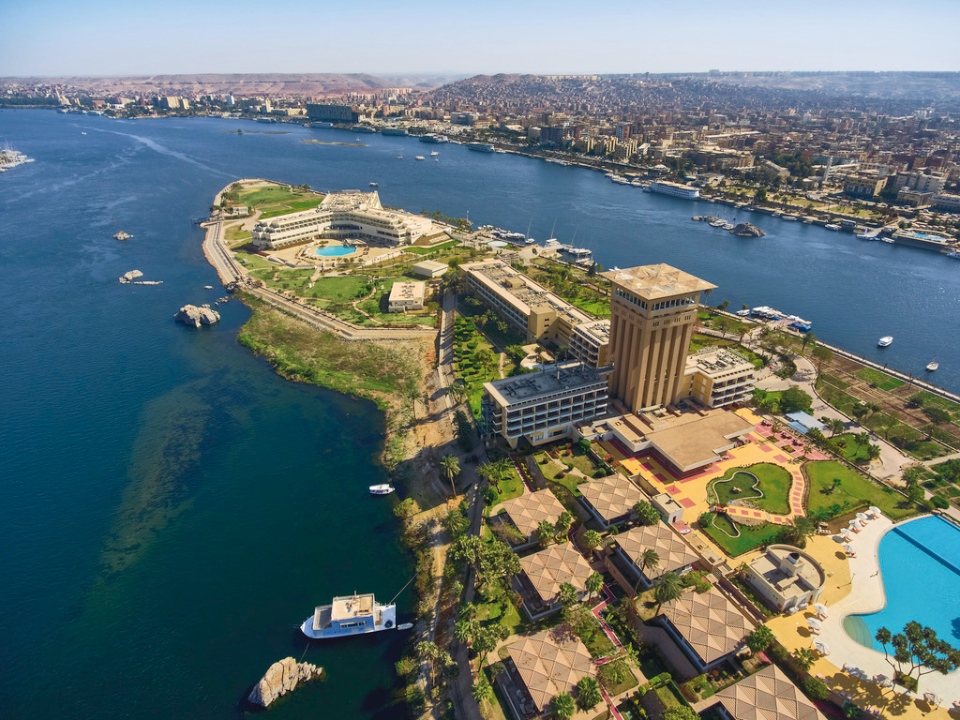
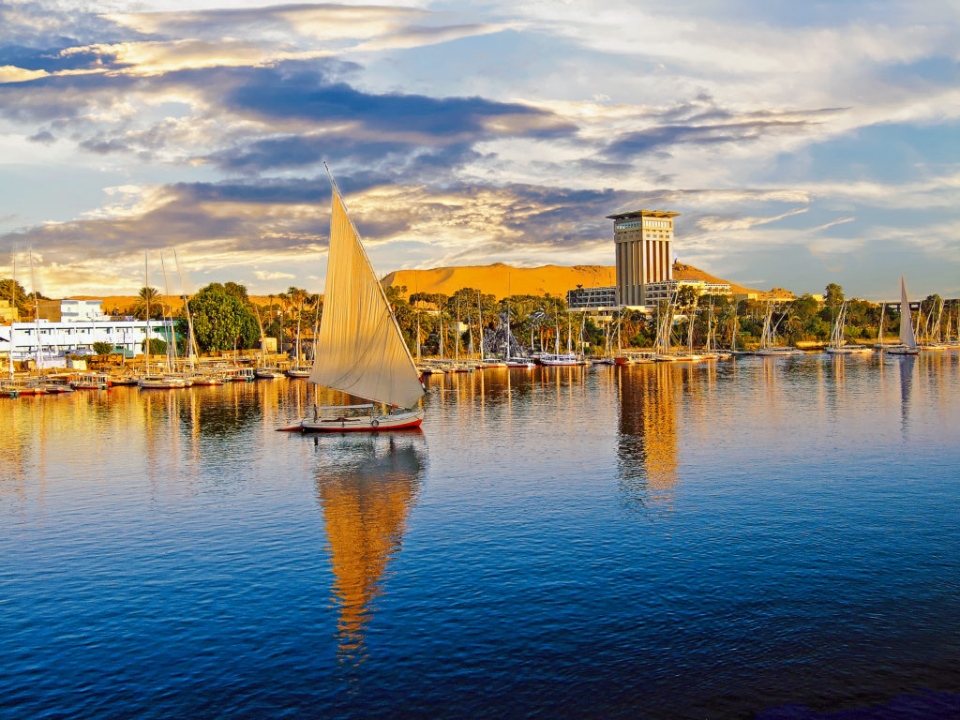
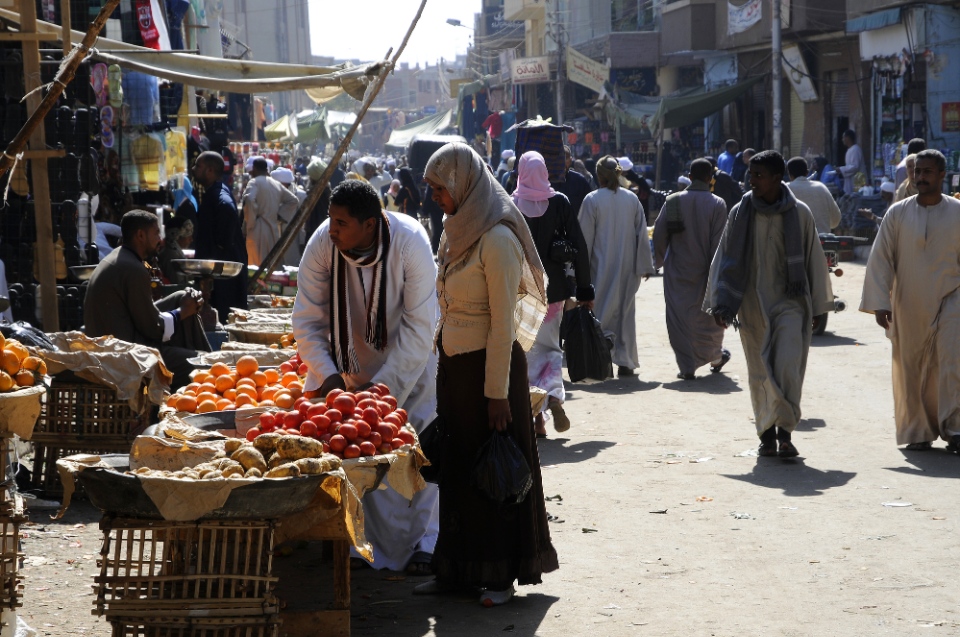
Stretching along the banks of the Nile, Aswan is a friendly city that offers a tranquil atmosphere if you’ve just arrived from Luxor or the capital Cairo. Once ancient Egypt’s gateway to Africa, it’s a perfect place to explore the temples, ruins and other tourist attractions south of Upper Egypt and the region’s distinct Nubian culture.
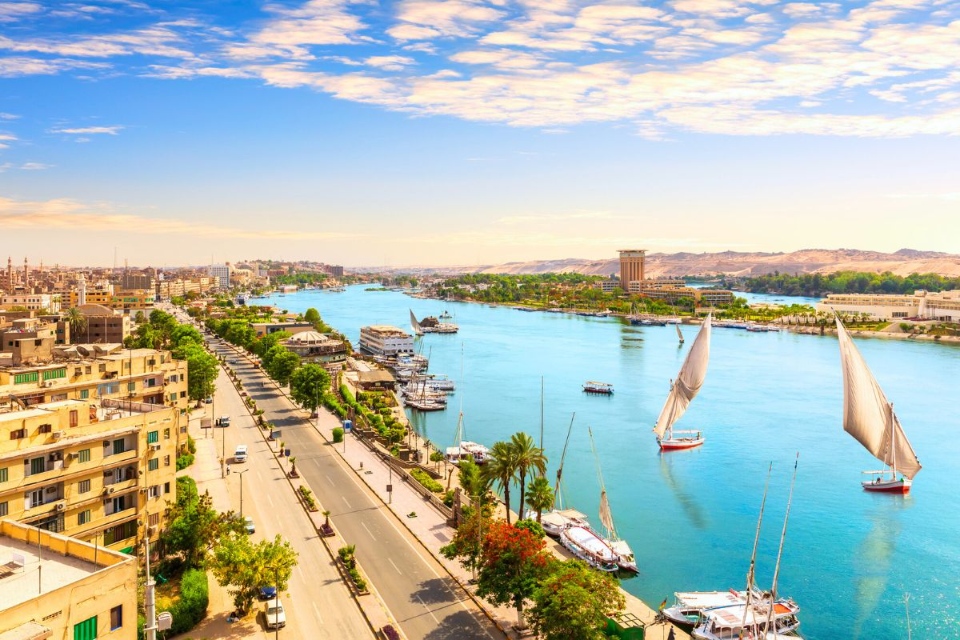

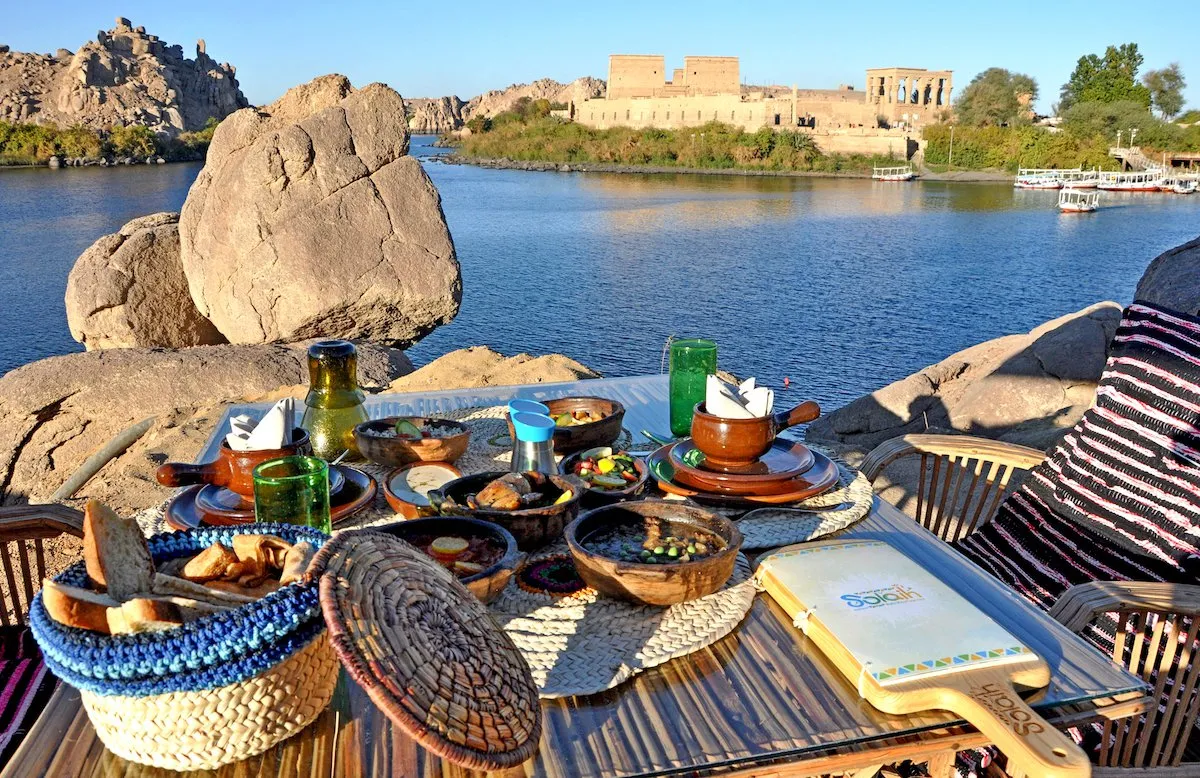
Overview of Aswan (# aswan travel blog)
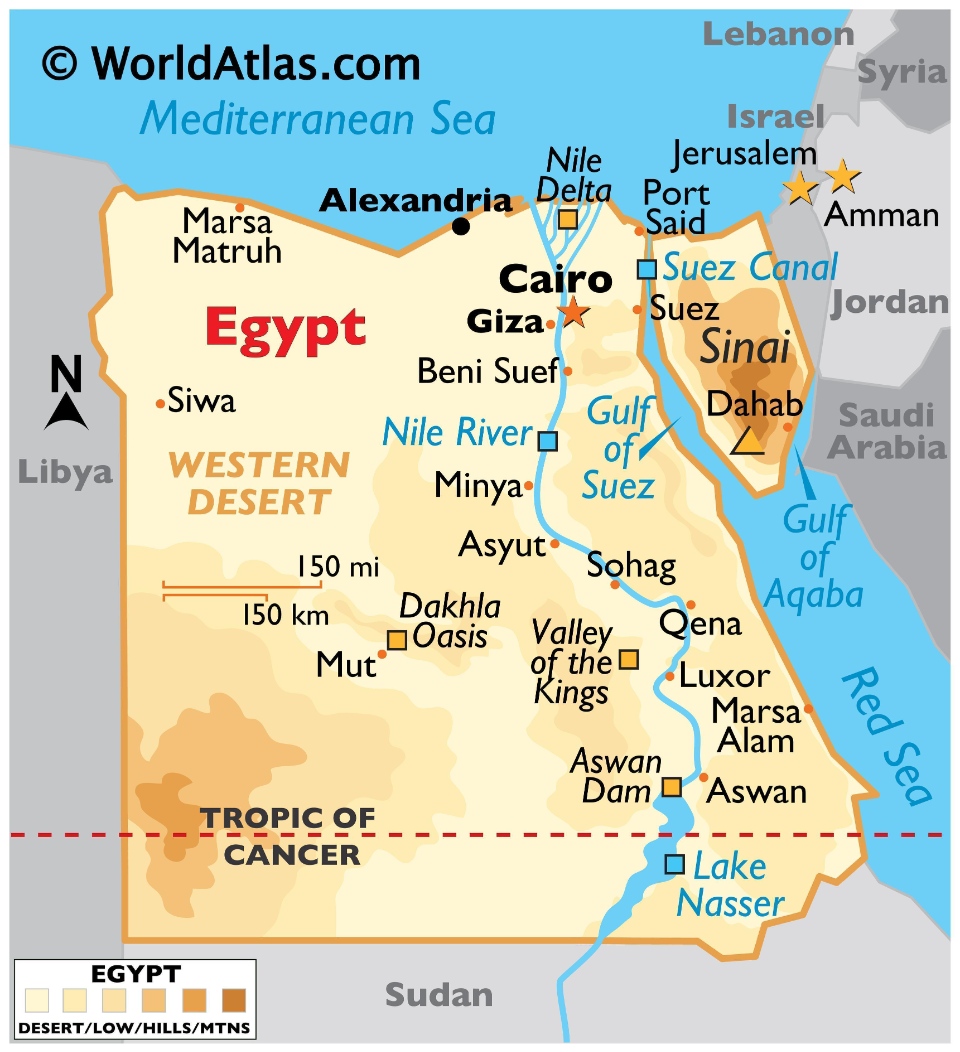
Aswan is the first or last destination for a 5-star cruise along the Nile from Cairo/Luxor to here or vice versa. Aswan is also the starting point to go to the great Abu Simbel temple near the border of Egypt and Sudan. In fact, Aswan is completely different from other cities, it is located in Upper Egypt and was once part of the kingdom of Nubia, so the culture in Aswan is a unique blend, completely different from Lower Egypt. Aswan is surrounded by desert and dunes, along the river are green palm groves and traditional felucca sailboats and of course, Aswan is full of majestic temples.
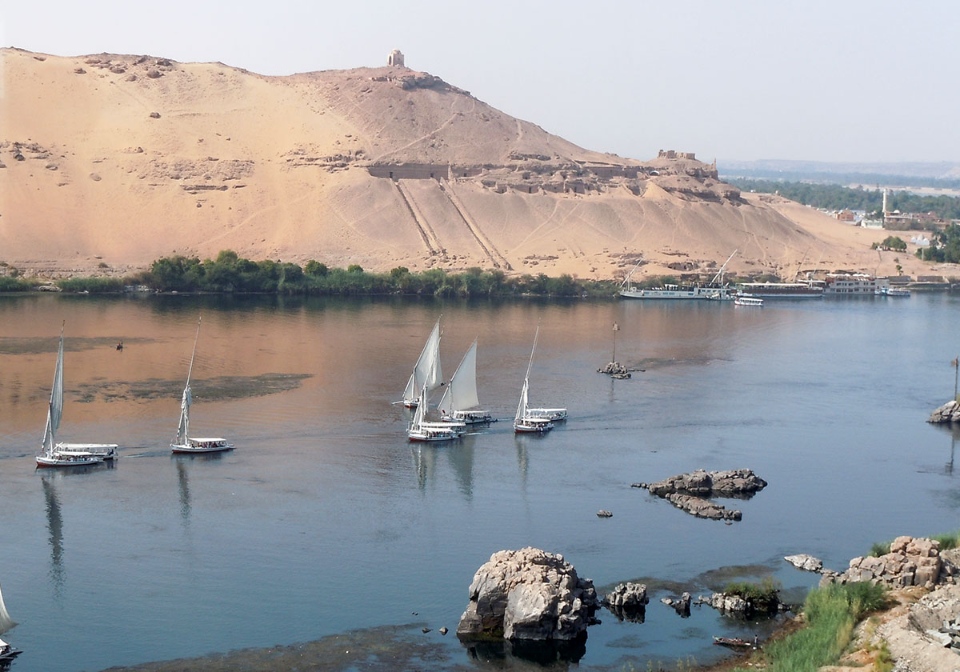


Aswan, old spelling Assuan is the provincial capital city of the same name in Egypt. Aswan is a city in the south of Egypt, 680 km south of Cairo, just below the Aswan Dam and Lake Nasser, with a population of around 365,000.
Aswan in Ancient Egypt was named after the goddess of childbirth and fertility. True to its ancient name, Swenett means trade, Aswan has always been an important trading hub on the banks of the Nile, the gateway to Nubia (Southern Egypt, North Sudan). At one time Aswan served as the capital of Upper Egypt.
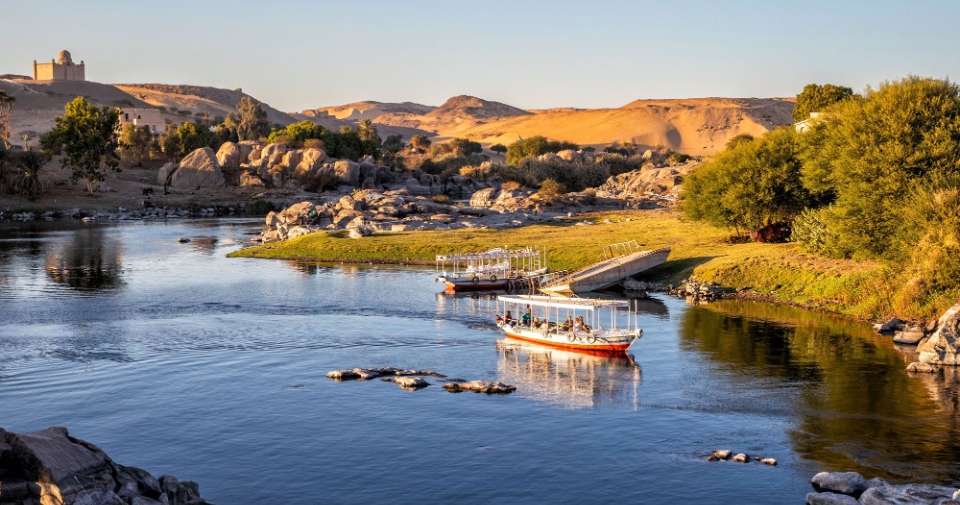
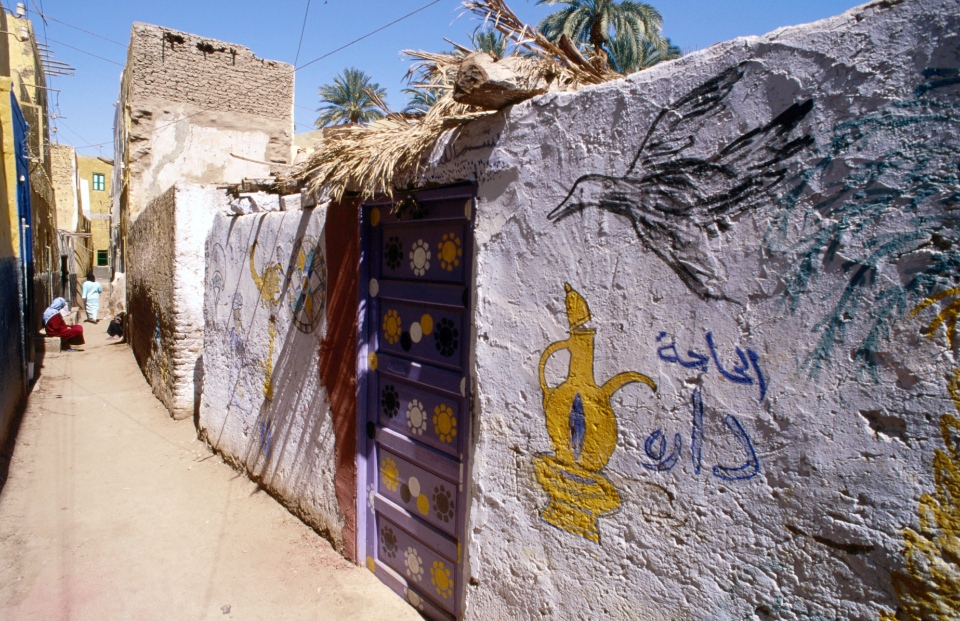
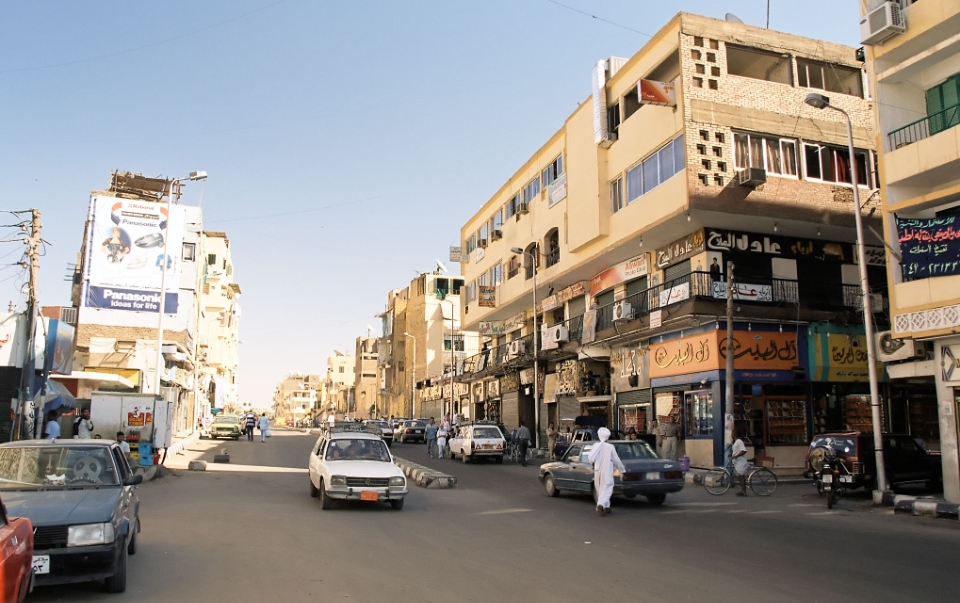
Aswan is also a modern city thanks to its trade with Sudan and is famous for the construction of the Aswan Dam. With thousands of years of history, diverse culture, and rich shopping, Aswan will enrich your trip to Egypt. To help you with basic information about Aswan, here are the detailed guide you should not miss when coming to this place.
When is the best time to visit Aswan? (# aswan blog)
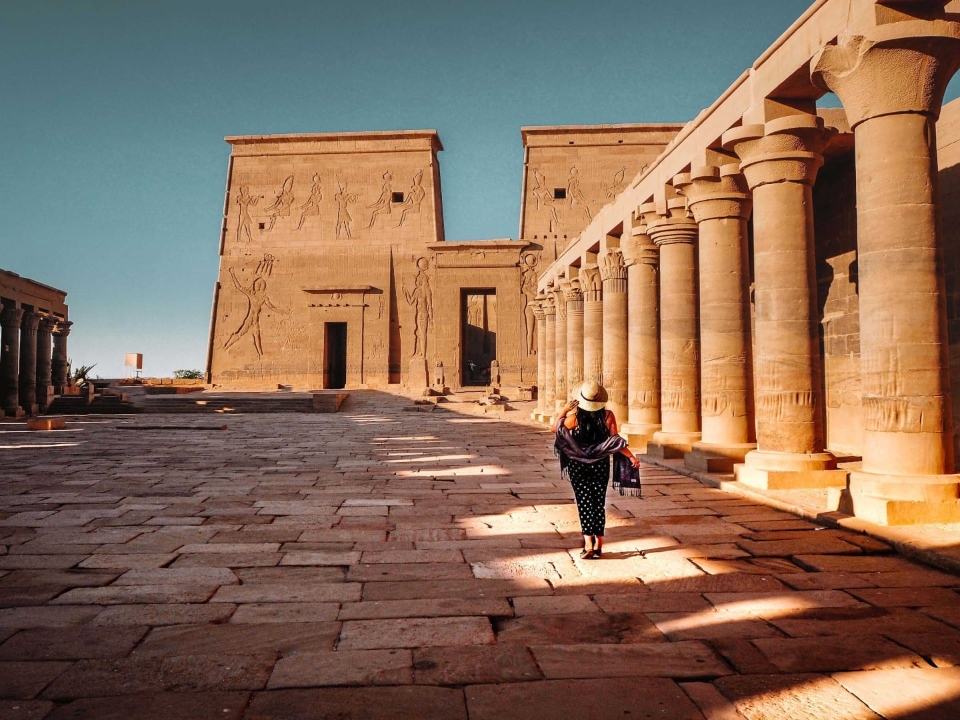
October to April is the best time to visit Egypt due to the mild weather, not too hot and not too cold but accompanied by crowds of tourists and high prices for hotels, restaurants and services. So you can choose May-June or September when the weather is still relatively pleasant, prices are lower and not too crowded.
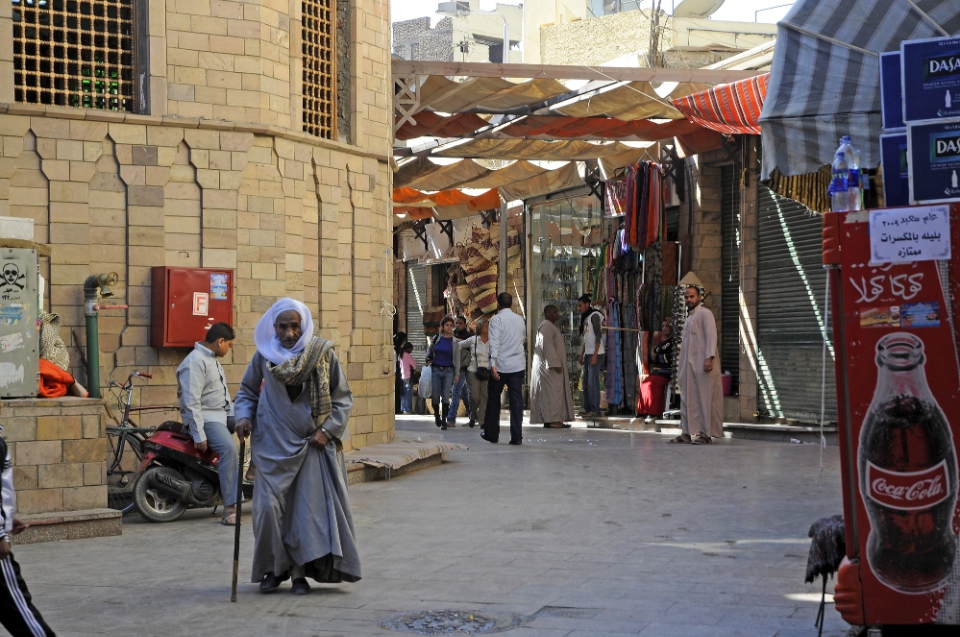
How to get to Aswan? (# aswan travel guide)
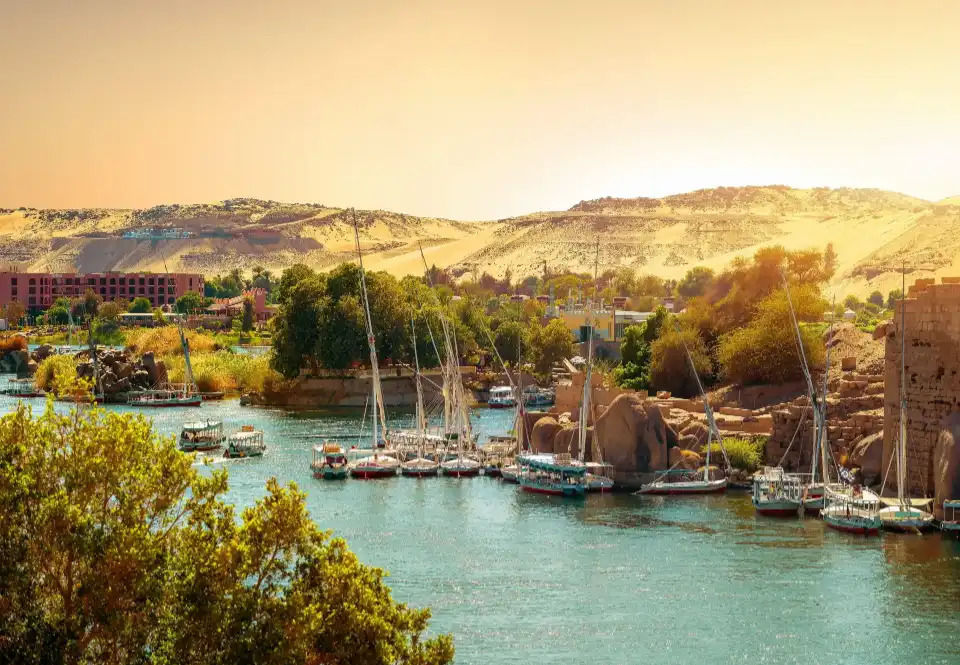
To get to Aswan, you must first go to Cairo – the capital of Egypt or Luxor city, then you can reach Aswan by various means of transportation.
Plane (# aswan travel blog)
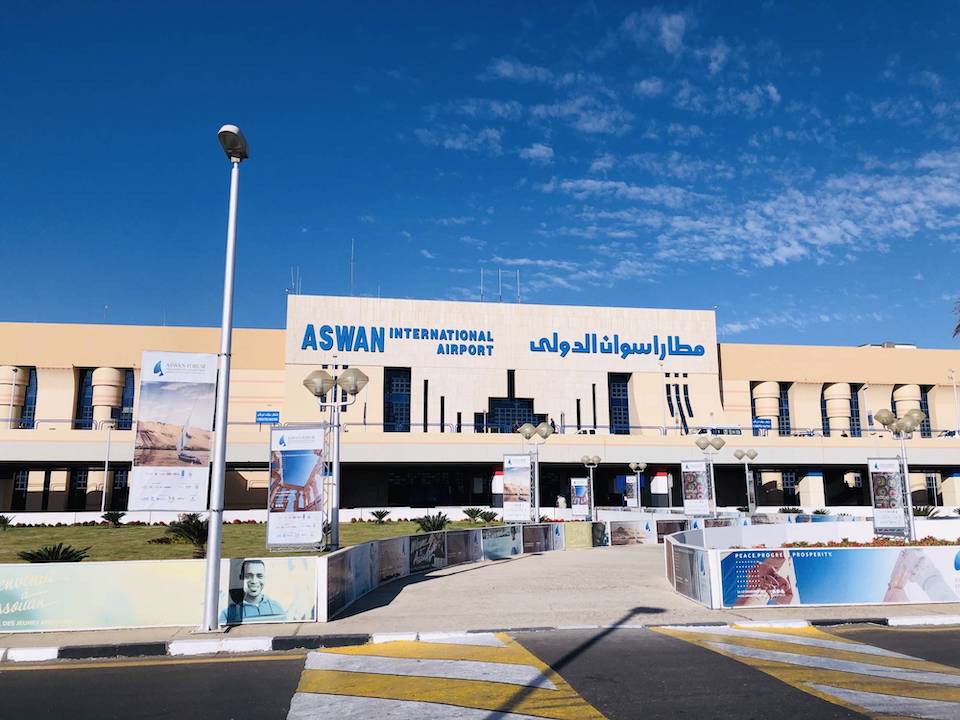
From Cairo there are many flights to Aswan operated by Egypt Air and Air Cairo from 6am to 6pm. The journey will take about 1.5 hours and costs from 60USD/person. You can go to Google Flights, Skyscanner or Kayak to find cheap airfares and most suitable routes.
To travel from Aswan Airport to the center will take another 45 minutes by taxi with the price from 100-200 EGP depending on your ability to bargain.
Train (# aswan travel guide)

If you want to enjoy the scenery, save money and time, the train is the ideal means of travel from big cities like Cairo, Luxor to Aswan. If you want to see life, villages, countryside, you can depart from Cairo at 08:00 am and arrive in Aswan at 10:40 pm. If you want to save time, take the train that departs from Cairo Ramses Station at 7:45pm and arrives in Aswan at 09:25am the next day. Prices for trains range from 13 to 80 USD from seat class to sleeper cabin.

You can buy tickets at the train station, through travel agencies or book directly on the website: https://www.enr.gov.eg/En/Default.aspx
Bus
The distance from Cairo to Aswan is 900km, so only a few domestic bus companies operating this route. Travel time is about 17 hours, the price ranges from 12 USD.
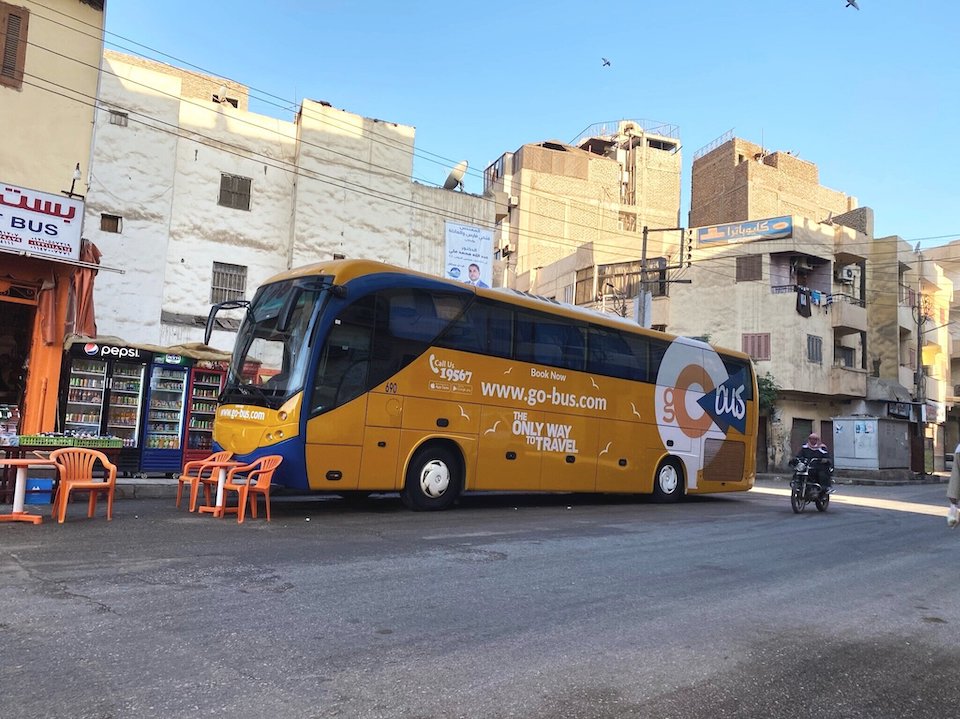
You can also take a bus from Cairo to Luxor and from Luxor take the train to Aswan. You can check departure times and book bus tickets at the website: https://go-bus.com/
From Luxor, there is a train to Aswan every 1-2 hours with the price from 10 USD, the travel time is about 4 hours. You can check the train time at the website: https://www.seat61.com/Egypt.htm#cairo-to-luxor-and-aswan-by-train
Getting around Aswan (# aswan guide)
Taxi/car
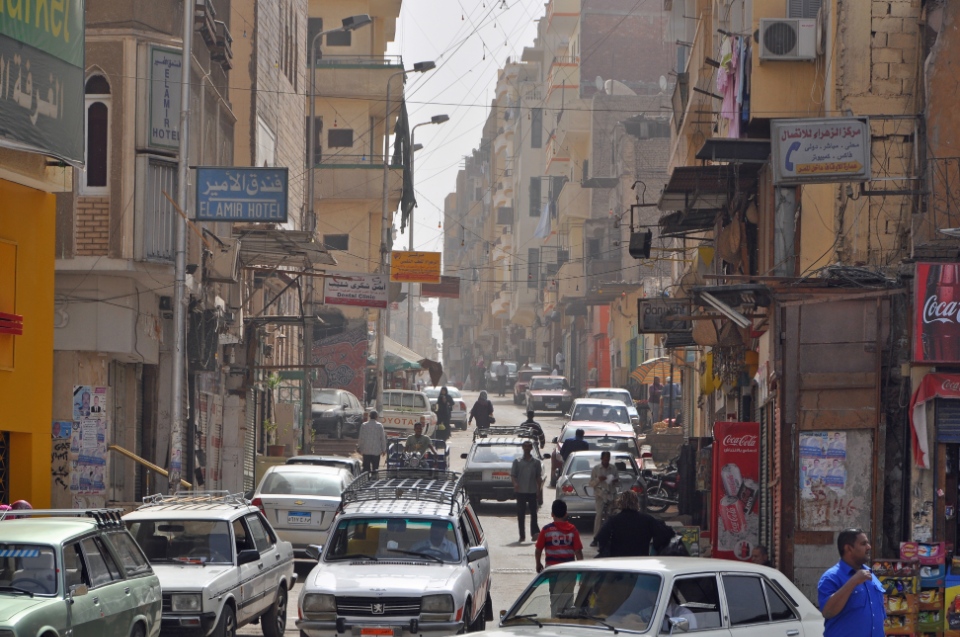
In Aswan there is no Uber, you will have to take Careem (similar to Uber) or taxi. However, the license plate will be in Arabic so you should save a screenshot of the numbers in English-Arabic on your phone for reference.
Boats and felucca sailboats
Some tourist attractions require you to take a boat across the Nile, such as Elephantine Island, and the West Bank of Aswan. The boat will cost about 5 EGP/trip, extremely cheap.
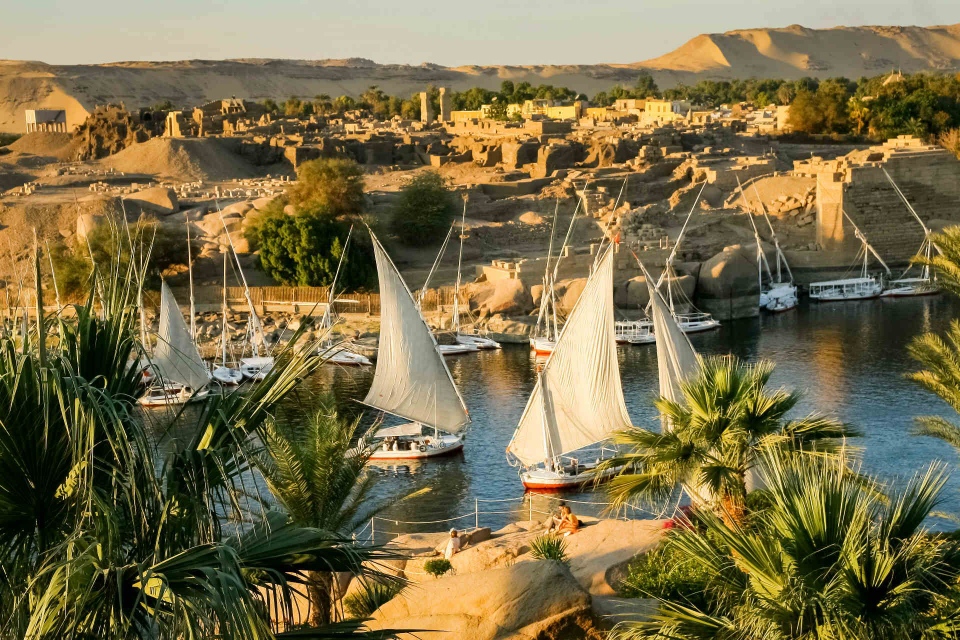
Private driver / buy tour (# aswan guide)
If you are traveling in a large group or you want to enjoy a full service, you should rent a private car with a private driver or buy a tour with an English-speaking tour guide. They’ll arrange transportation (save money and time haggling), make recommendations on places to eat, tell you what to see in Aswan, and provide detailed information on all the attractions in Aswan.
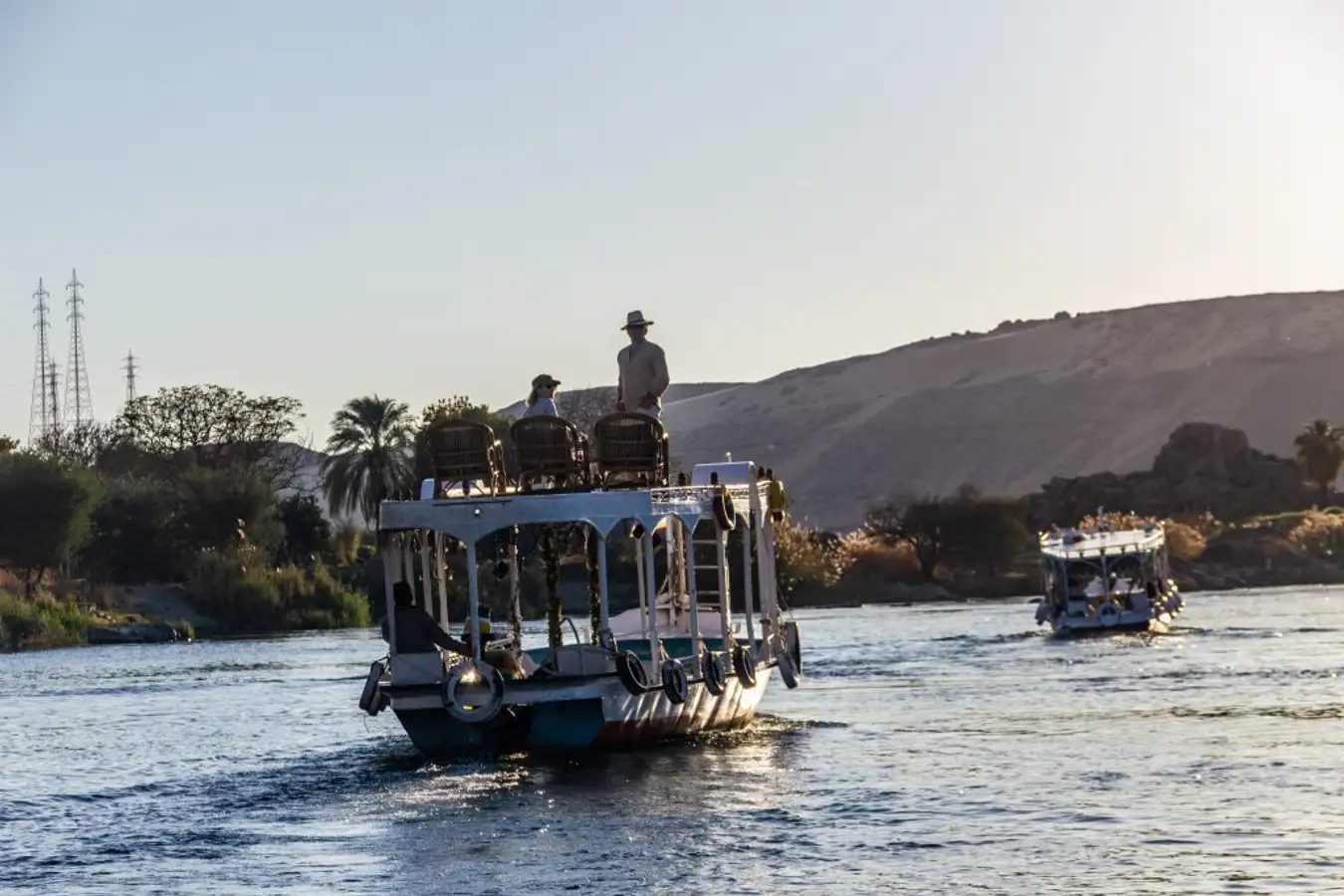
What to do and where to go in Aswan?
The best way to discover the charms of Aswan Egypt Tourist Attractions is to hop on a felucca (traditional sailing boat) and view the town from the water highway that once made Aswan such a popular trading hub. The river here is dotted with islands containing picturesque mud-brick Nubian villages and surrounded by the giant sand dunes of the West Bank. It’s all incredibly photogenic, especially at sunset, when hundreds of feluccas boats sail the river glistening in the sun. Let’s find out more about Aswan Egypt tourist attractions!
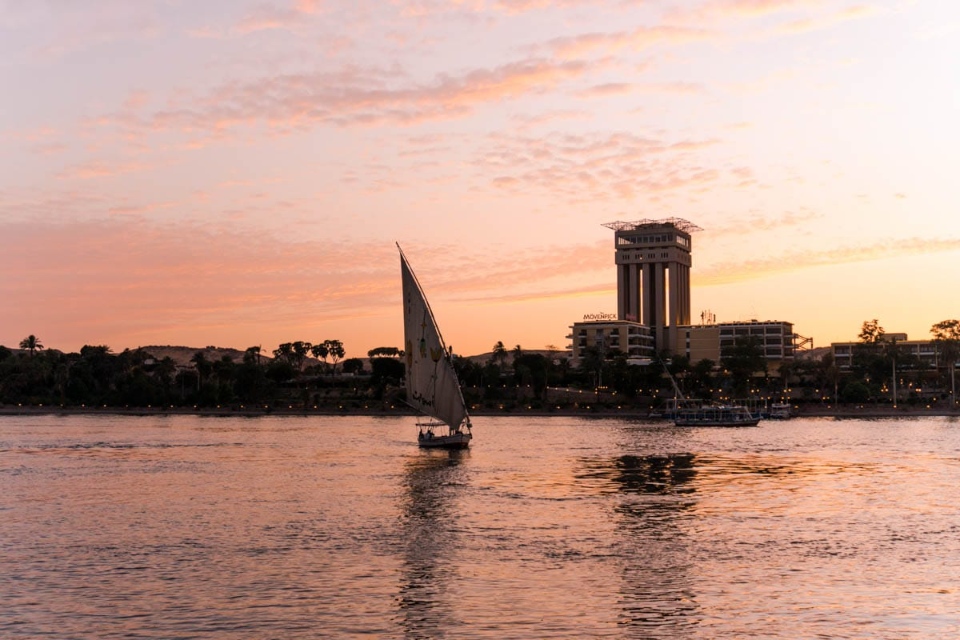
Philae Temple
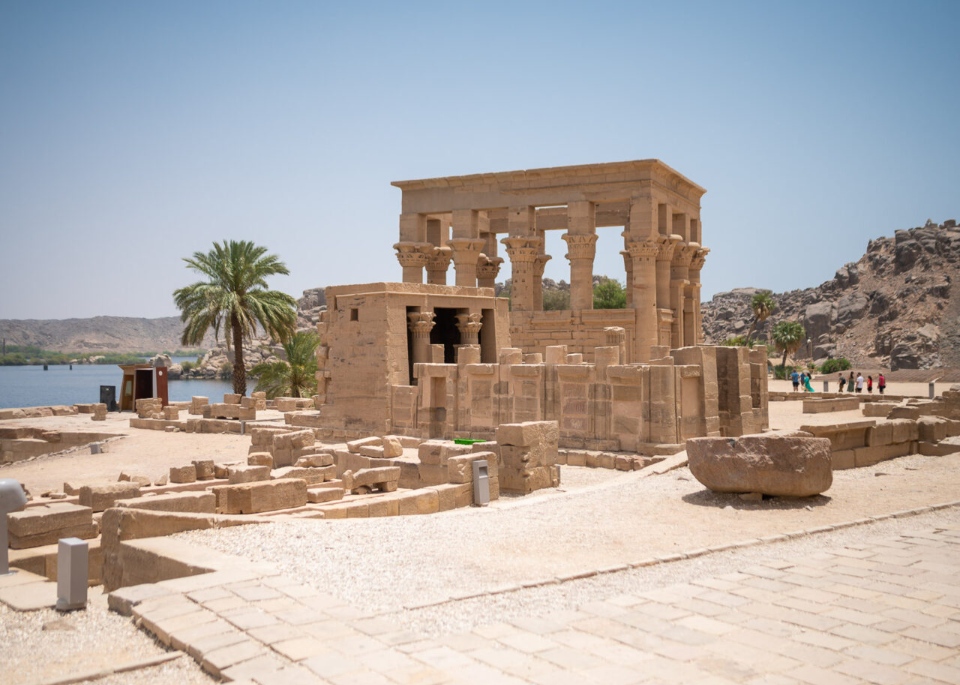
Philae Temple, also known as the temple of Isis, is located on a rocky island in the middle of the Nile River, 12 km south of the center of Aswan. The temple was built in the late Ptolemaic and early Roman period (300 BC), so Philae is a combination of ancient Egyptian and Greco-Roman architecture. Philae was once submerged after the first Aswan Dam was built. Then UNESCO and the Egyptian government had to move the temple to Agilika Island, 300 meters from Philae Island. It was a great relocation for 9 years, the temple was cut into stones weighing several tens of tons and moved to the new site, then arranged into a perfect temple as before.
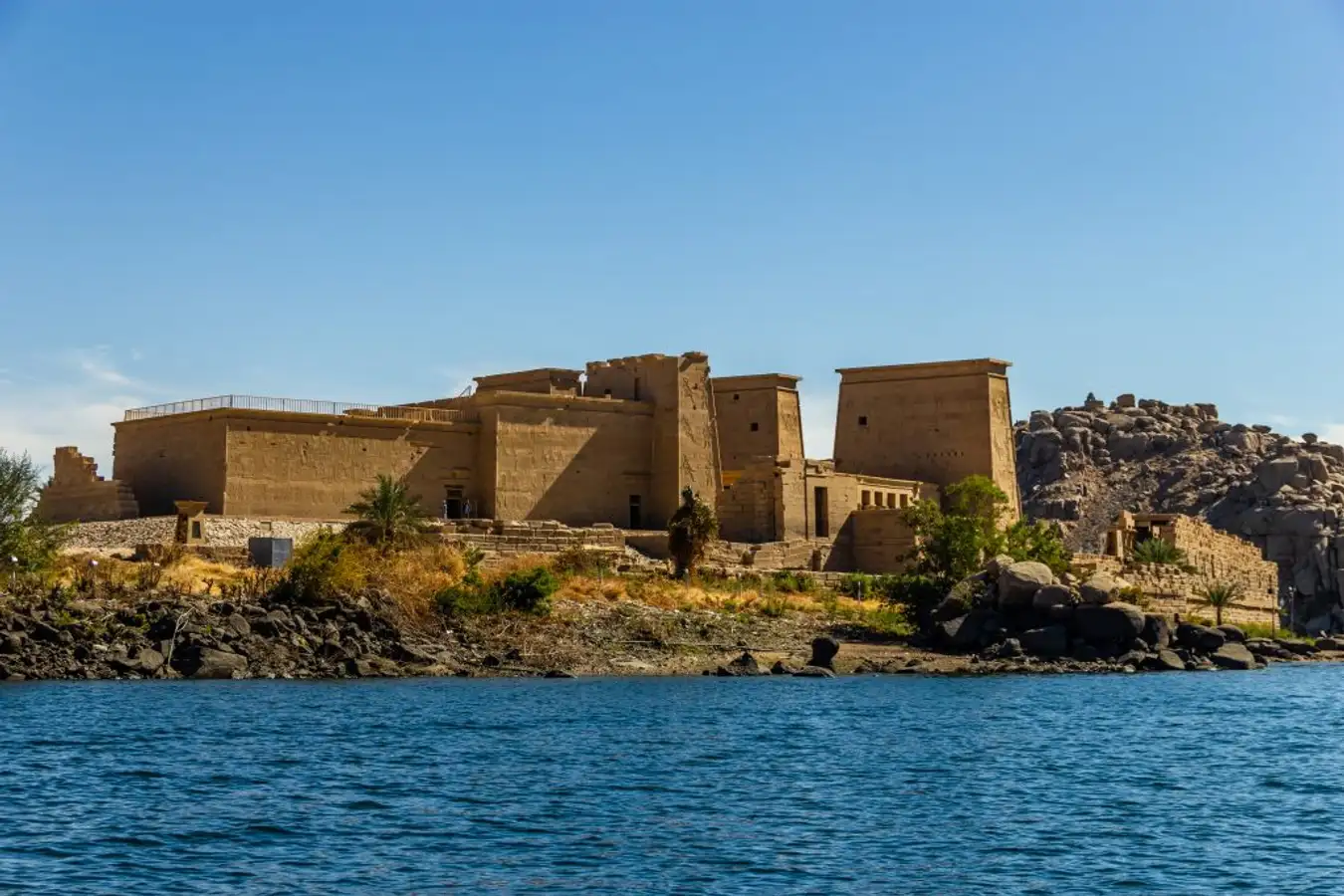
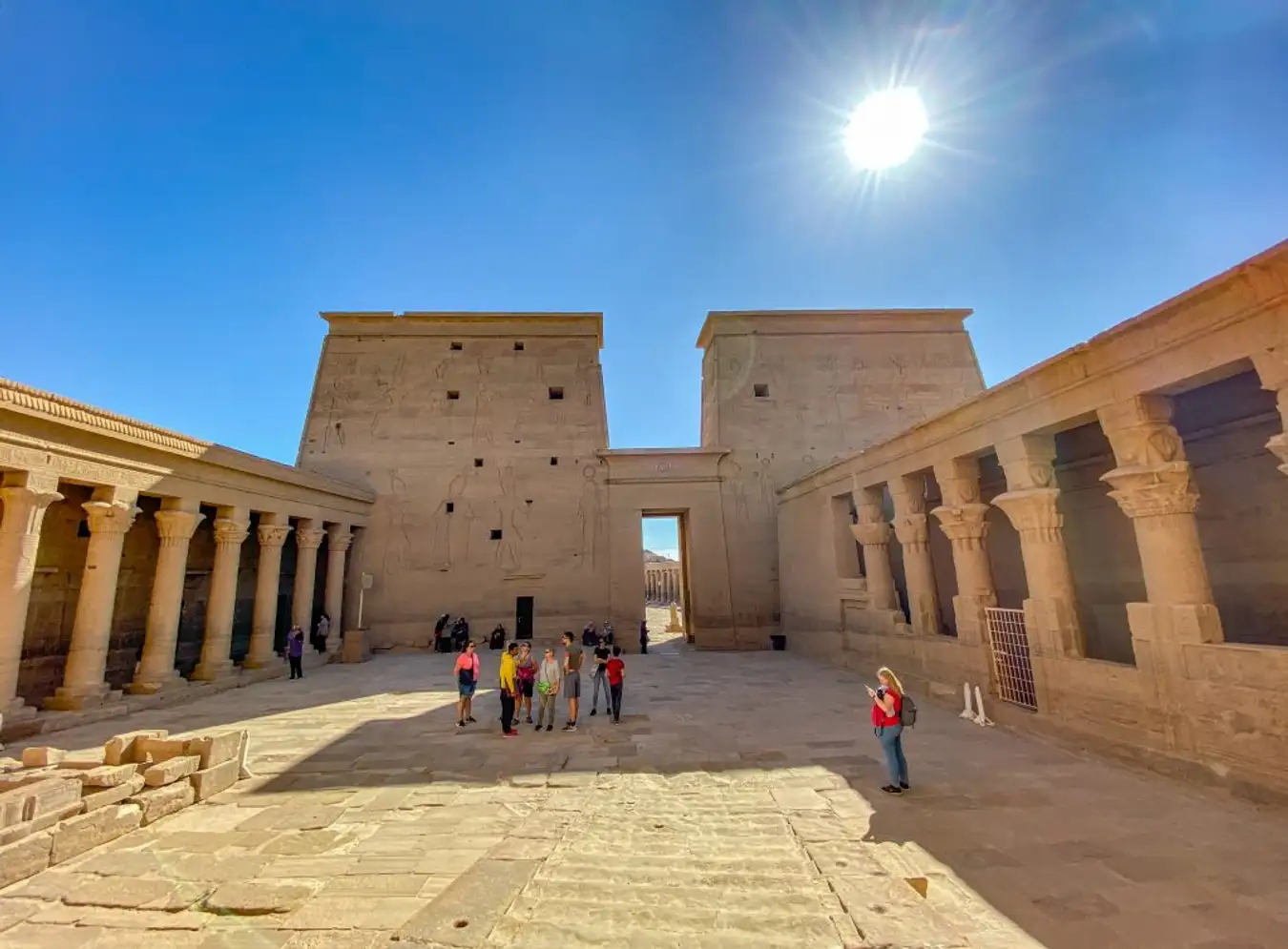
Philae is the best preserved Ptolemaic temple in all of Egypt. Many details carved on the Nile water lily pillars, reliefs, towers, temples are almost intact. The stories of the gods, the river god Hapi, expressed through the sculptures at the entrance and on the walls are vivid, making visitors fascinated.
With a long history associated with ancient Egypt, Aswan has a complex of architectural heritages, monuments and monuments, attracting tourists from all over the world, most notably the sacred temple of Philae.
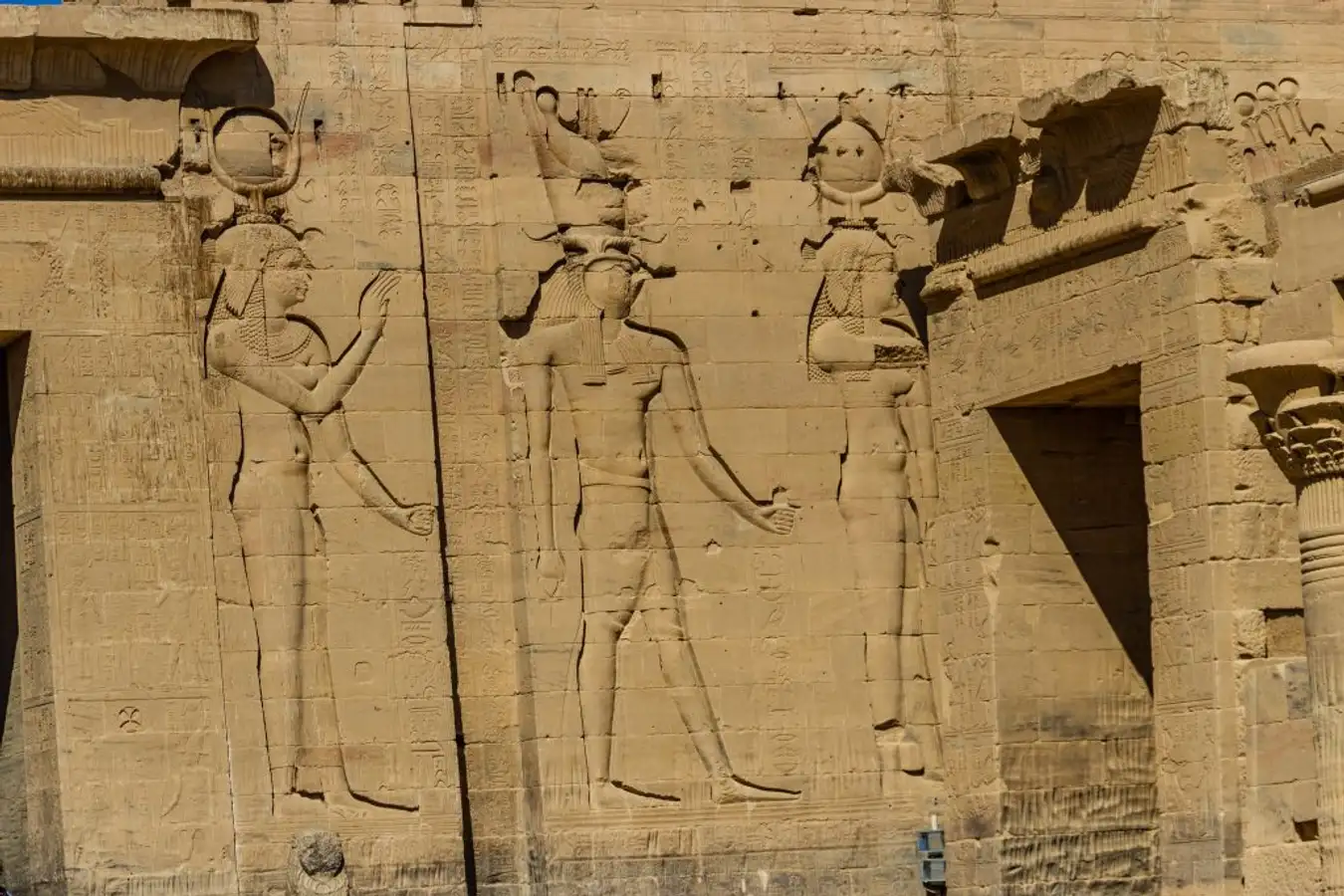
Pharaoh Ptolemy XII Neos Dionysus built the first tower, which shows him fighting his enemies and being watched by the gods Isis, Horus, Hathor. To the west of the temple is Hadrian’s gate built in AD 394. To the east of the island is a small temple dedicated to the god Hathor, inside are reliefs of Bes – the god of music.
The sacred Temple of Isis (commonly known as the Temple of Philae) is one of Upper Egypt’s most awe-inspiring monuments for its fine art of relief and stunning symmetry of architecture. Like Abu Simbel, the temple was saved from the waters of Lake Nasser by a UNESCO rescue project by transferring it from Philae Island to nearby Agilika Island.
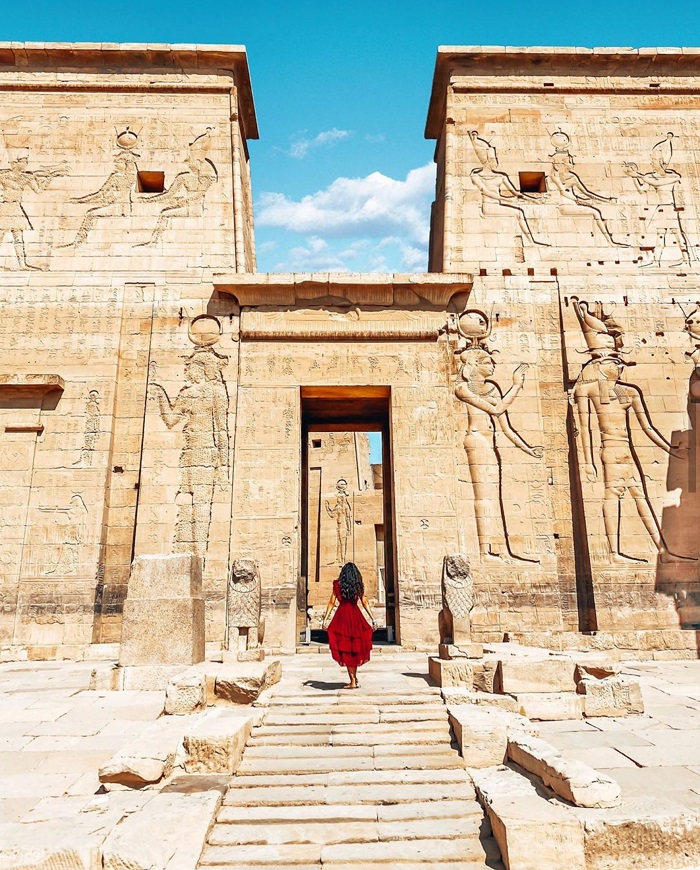
The Temple of Isis – a center of the ancient cult of Isis is the main part of the Philae complex. The island is also home to the Temple of Hathor, the Kiosk of Trajan and many other buildings from Roman and Byzantine times. The temples are easily accessible by taxi from Aswan, but it’s best to opt for it as part of a day tour to Abu Simbel.
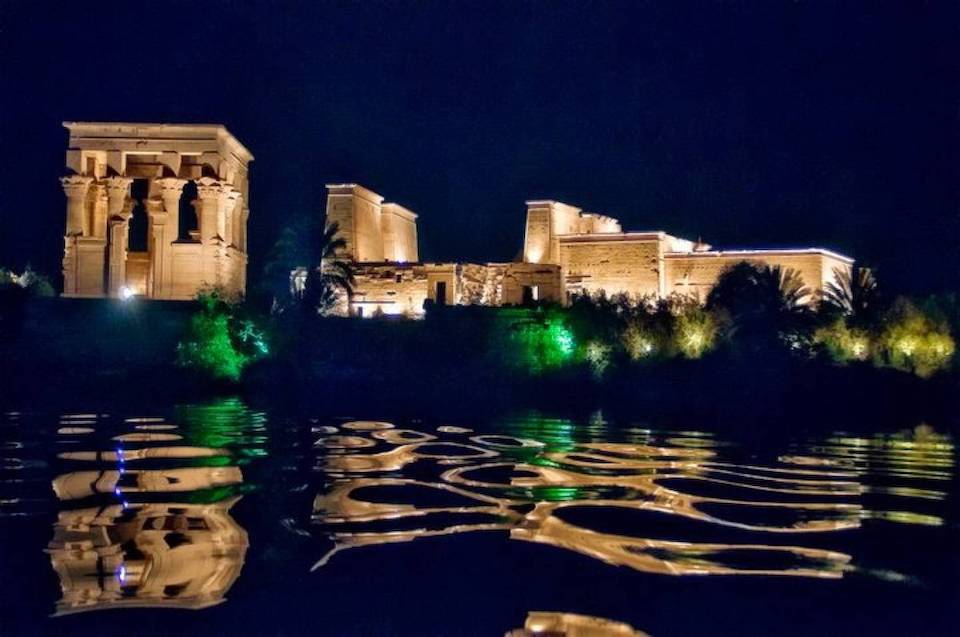
Come to Philae, don’t miss the light and music show held every day at 3 time frames: 6:30pm, 7:45pm, 9pm. For more information and ticket prices, please refer to the website: https://soundandlight.show/en/show/philae-show
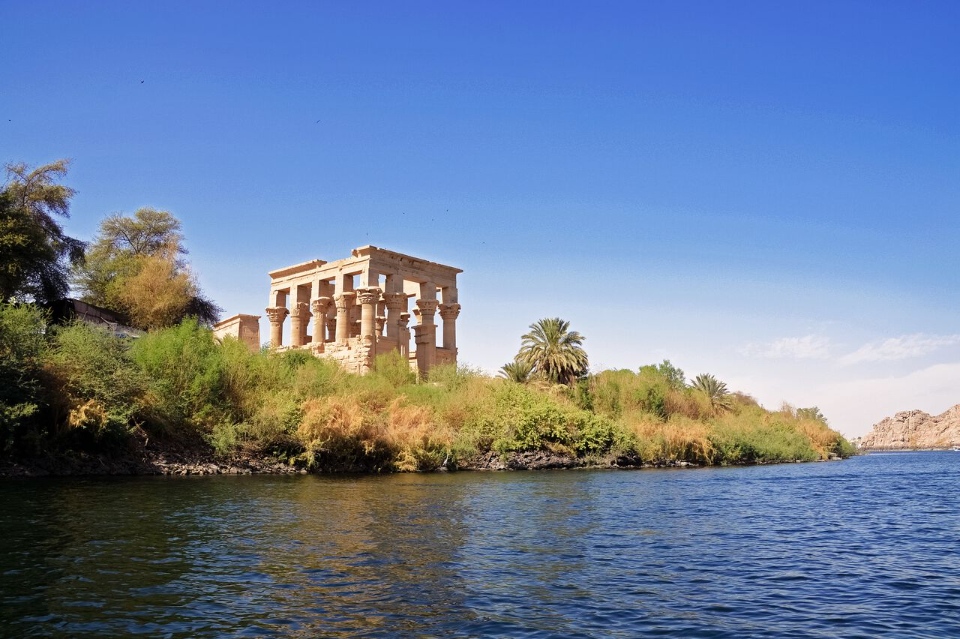
Aswan Dam
Every year, floods bring a lot of silt and minerals to the Nile Delta. But sometimes the floods are too big to cause flooding, affecting people’s lives. So in 1902, a hydroelectric dam was built (old dam) to prevent floods, regulate water sources for domestic purposes, farming and more importantly, to produce electricity for the needs of the people. country and a new dam was inaugurated in 1970. Most tourists will visit the new, more modern hydroelectric dam (Aswan High Dam). The water level of the new hydroelectric dam is 111m high and 40m wide at the top, which can hold 43 million m3 of water. The lake is connected to a canal called Toshka, which in turn connects to the artificial lake Nasser next door. Lake Nasser covers an area of more than 5000 square kilometers and is one of the largest lakes in the world.
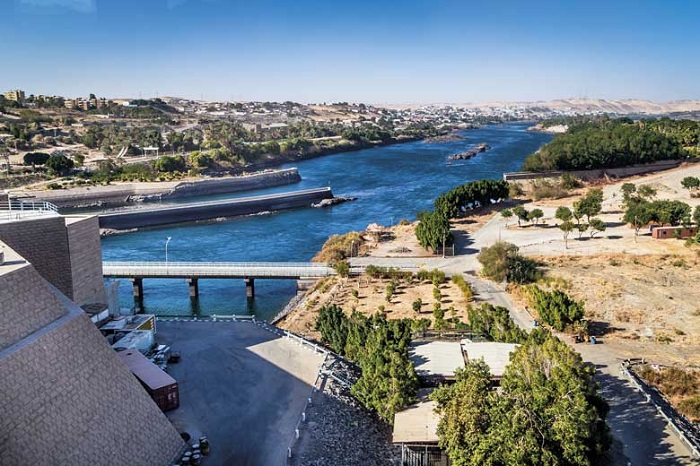
To build the Aswan hydroelectric dam, 30,000 people worked continuously for 11 years and the amount of stone used to build this hydroelectric dam was 17 times greater than the amount of stone used to build the pyramid of Kheops. The construction cost of this hydroelectric dam is $270 million. However, this work also caused a lot of damage, the most significant of which was the sinking of the ancient temples of Philae and Abu Simbel, which forced the Egyptian government to relocate them elsewhere.
The Aswan Dam is modern Egypt’s most controversial construction project. Started in 1960 and took 11 years to complete, the dam was President Nasser’s project and greatest achievement and was achieved through funding and technical assistance from the Soviet Union.
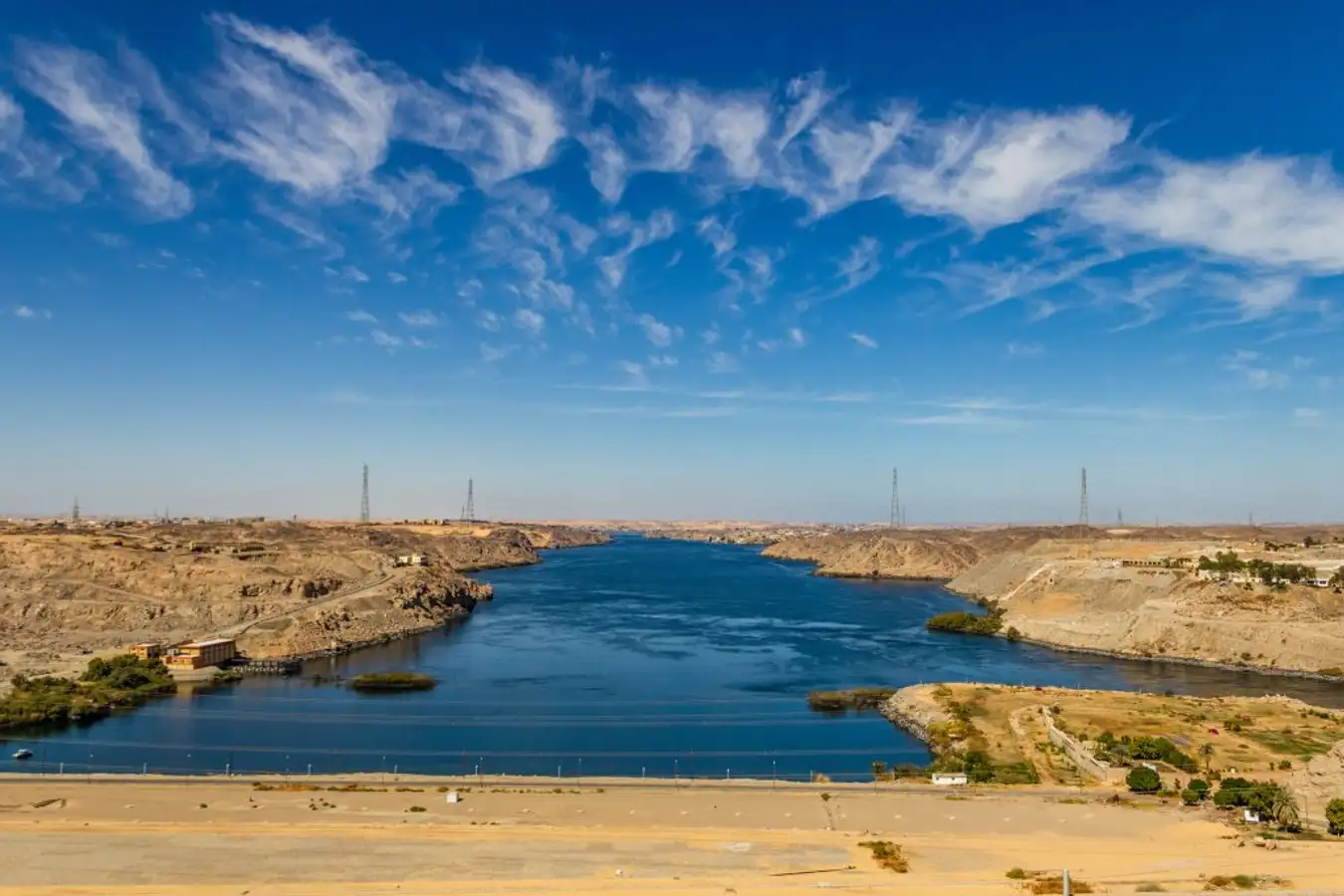
The dam took 42.7 billion cubic meters of rock (17 times the volume of the pyramid of Kheops) with a total length of 3.6 km. It is 980 meters thick at the base and 40 meters at the top. The average capacity of the reservoir (Lake Nasser) is 135 billion cubic meters with a maximum capacity of 157 billion cubic meters.
The dam brings great benefits to the country, for sustainable hydroelectricity across the country and increasing the amount of arable land in Egypt. It also ended the annual Nile flood and the creation of Lake Nasser (the world’s largest man-made lake) which wiped out much of Upper Egypt’s legacy as the waters rise.
Elephantine Island

Vibrant with palm tree plantations and colorful mud-brick-house villages, Elephant Island is a Aswan Egypt tourist destination that attracts a lot of visitors. To its south are the Aswan Museum and the Ruins of Abu, Aswan’s oldest settlement, which contains the Khnum temple of the Ancient Kingdom and the temple of Satet.
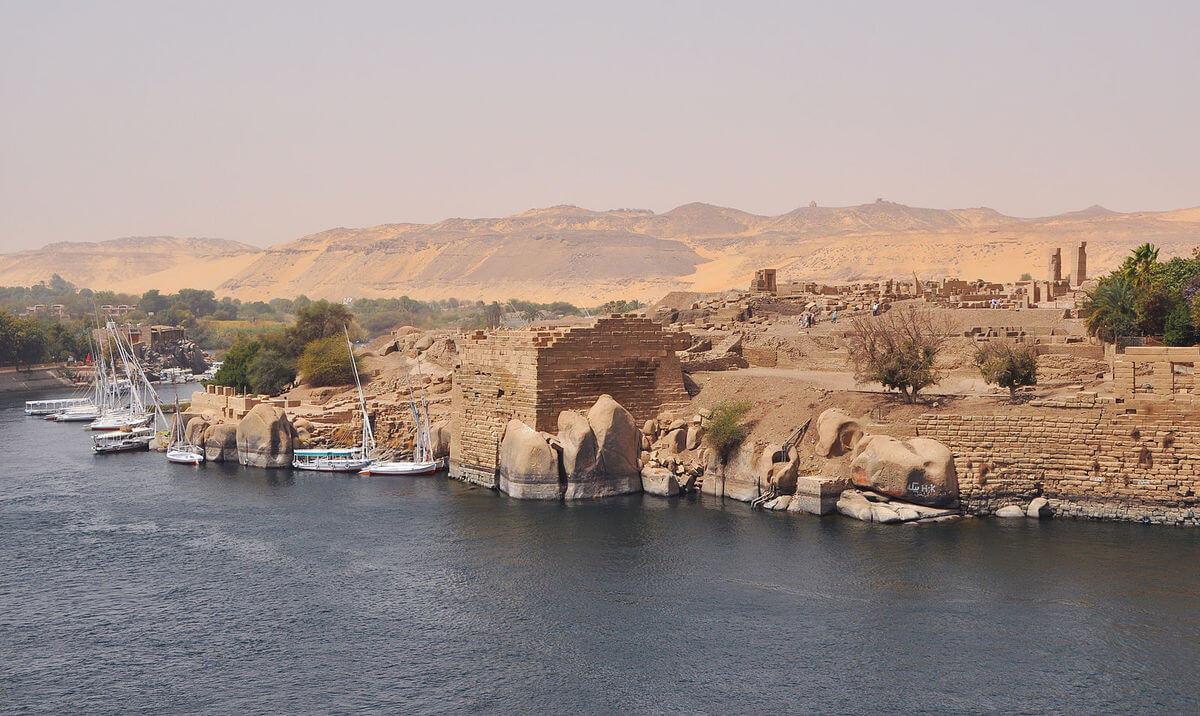
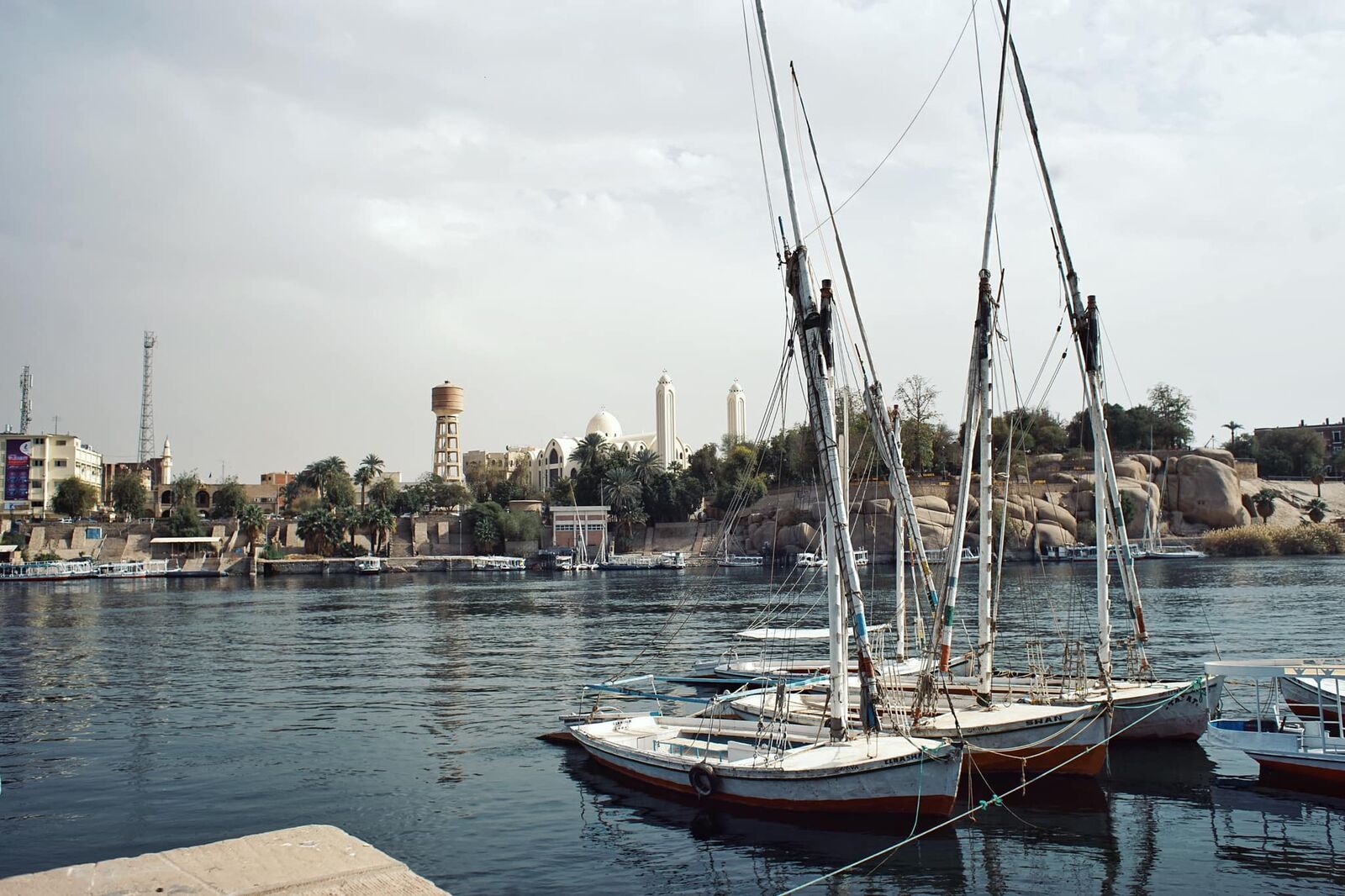
After exploring the ruins, head north into the island to wander the side streets of the villages of Koti and Siou, where houses are brightly painted. From the marina on the west side of Siou Island, you can catch a boat to Kitchener Island – the so-called Aswan Botanical Garden, the island was once the property of Lord Kitchener, who turned it into a garden. lush green of exotic plants from Asia and Africa.
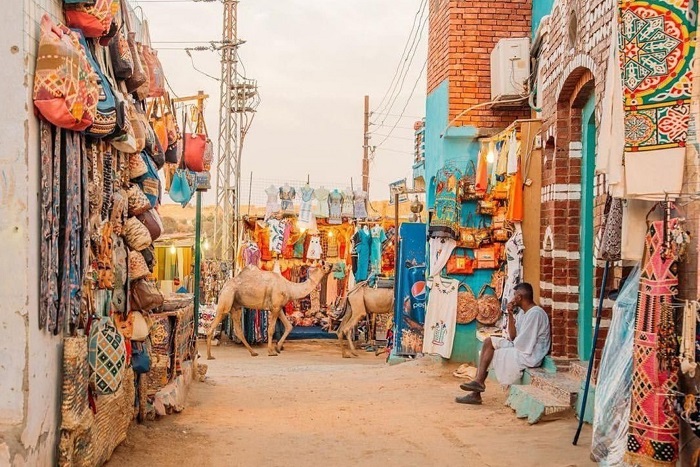
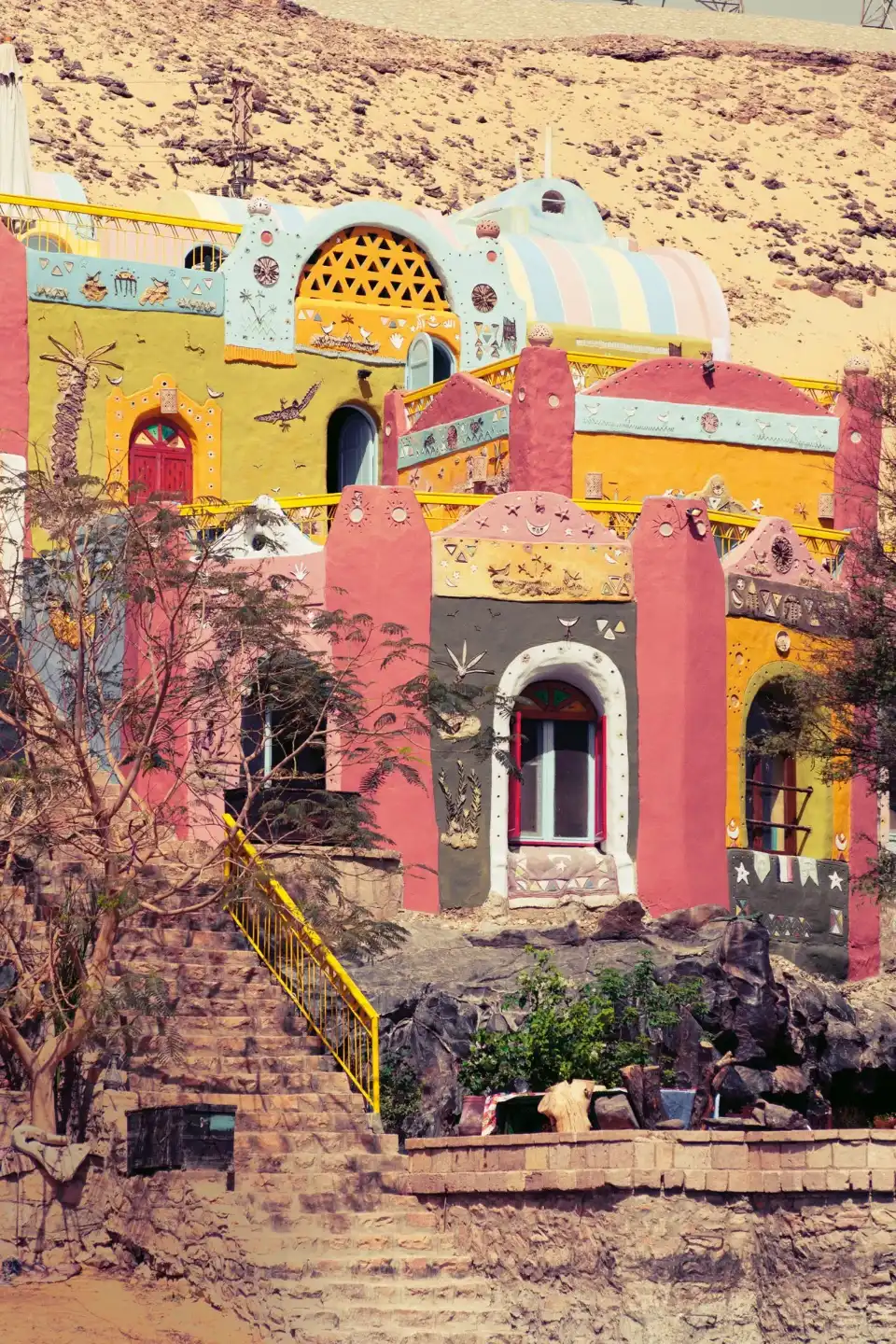
There are regular local ferries from the marina in downtown Aswan to Elephant Island, or you can also rent a felucca to sail around the island.
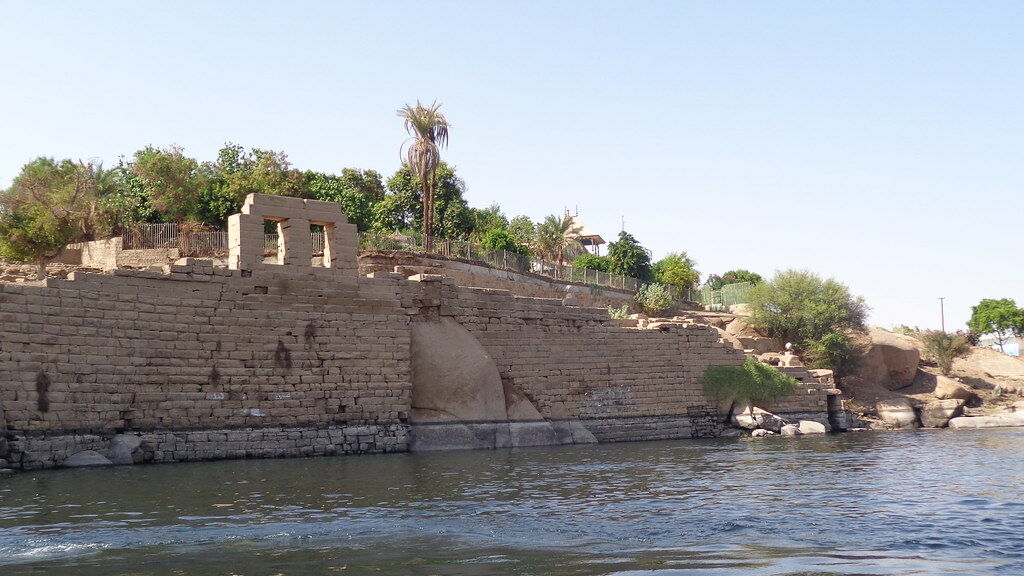
Abu Simbel Temple
If you have time in a day from Aswan, choose to visit Abu Simbel. Built by Ramses II. This place was saved from destruction by a UNESCO rescue project in the 1970s. Abu Simbel is not only a feat of ancient architecture, but also of modern engineering.
Located in the most remote place, at the end of the border with Sudan, 300km from the city of Aswan is Abu Simbel – one of the greatest and most majestic temples in Egypt. Abu Simbel was started in the 13th century BC and took 20 years to complete. This is a complex of two temples carved directly into two monolithic mountains in the Nubian region. A temple dedicated to the most famous Pharaoh of ancient Egypt: Ramesses II and a smaller temple next to it in memory of his wife, Queen Nefertari.
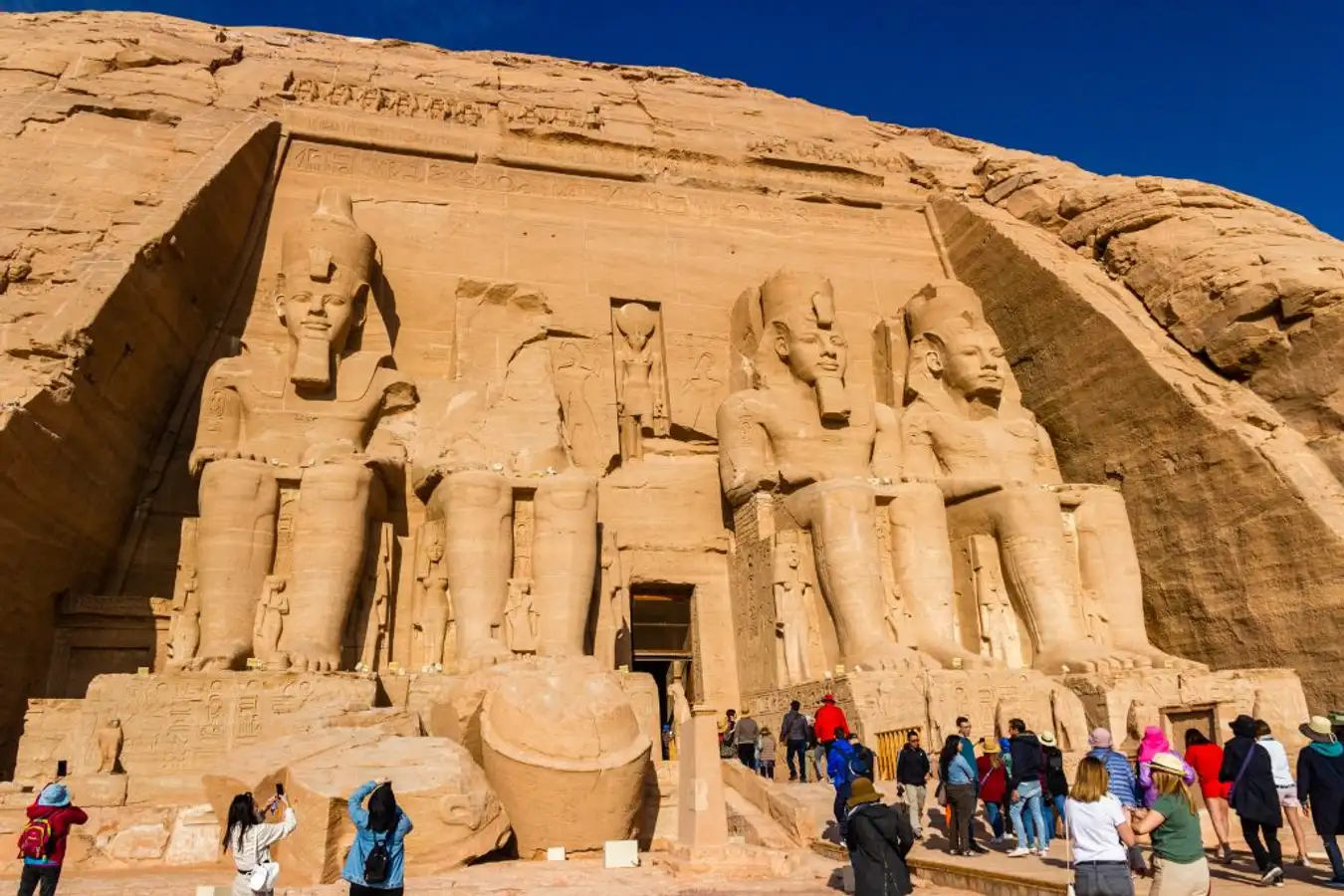
In 1959, facing the risk of the temple being washed away by the Nile, UNESCO moved the temple to an artificial hill higher than the old temple, 200m from the original location. Engineers and workers cut the temple into pieces of rock estimated to weigh 20-30 tons, then assembled them exactly like the original. The relocation took five years and cost $40 million. Abu Simbel was recognized by UNESCO as a world cultural heritage in 1979.
The temple was cut into more than 13,000 small pieces and brought to an altitude of more than 65m above the level of the Nile River and then reconnected for more than 8 years. There’s even a documentary about this process, if you want to see it, you can find it: The World saves Abu Simbel. Being able to visit with my own eyes this miraculous temple both ancient and modern, I was very touched.
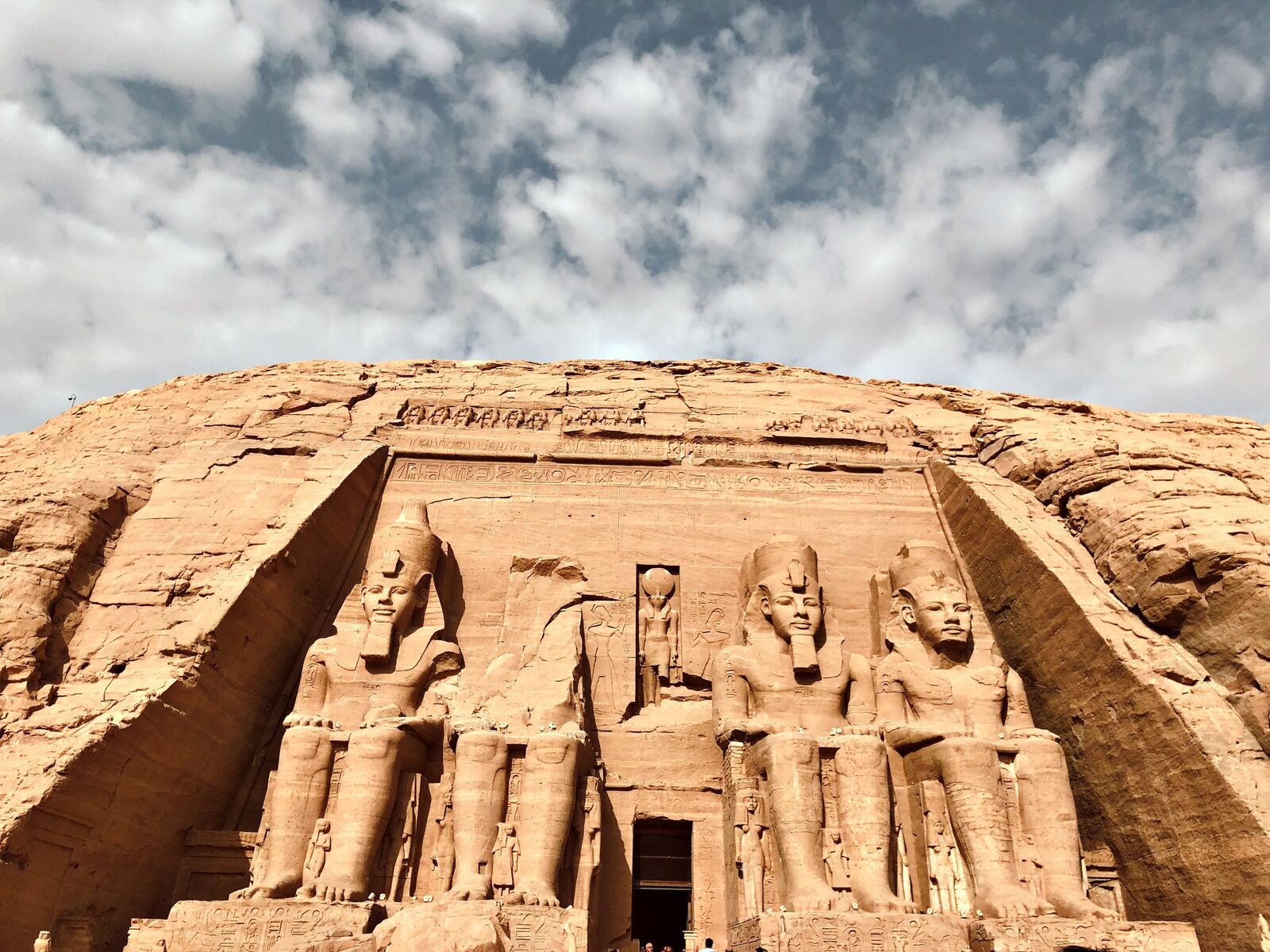































![10 best airports in Asia in 2016 [RANKED] kuala-lumpur-international-airport-best airports in asia in 2016 by skytrax ratings](https://livingnomads.com/wp-content/uploads/2016/08/29/kuala-lumpur-international-airport-best-airports-in-asia-in-2016-by-skytrax-ratings-218x150.jpg)








